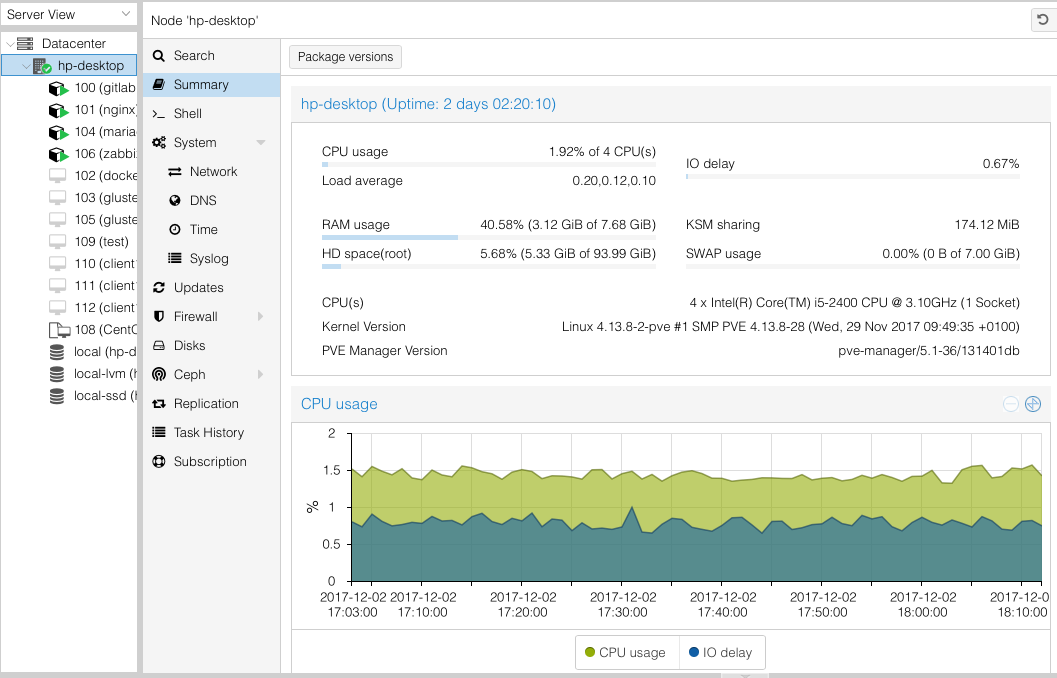I was recently introduced to a superb piece of software called Proxmox. Proxmox is a virtualization environment not unlike VMware ESXi. Capable of running full KVM based virtual machines or lightweight LXC based guests, Proxmox has proven to be the perfect solution for a home lab setup. Installing Proxmox is no different than installing any other Linux distribution and with minimal effort can be clustered together to form a system capable of migrating a guest from one host to another. With the right hardware you can even perform live migrations. Although Proxmox supports and is capable a lot more than I need it satisfies my desire to have a more “enterprise” like way to virtualize hardware in my home.
Proxmox is free with support plans available. If I were to use it anywhere other than at home I’d definitely play for the support subscription as it allows you to get access to the proper update repositories as well as, obviously, support. Without the support subscription your Proxmox is basically part of a testing repo meaning you get faster access to updates but also updates that are less tested.
In the coming weeks I’ll detail a bit more how I’m using Proxmox, how to setup KVM or LXC based hosts and provision them using Ansible.
